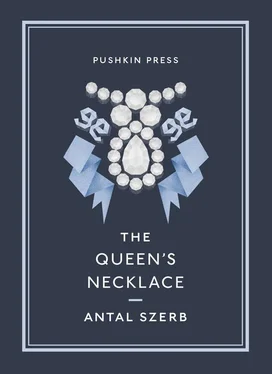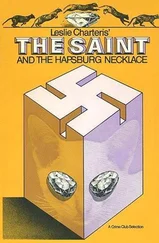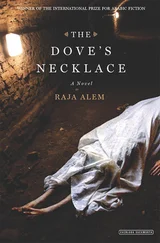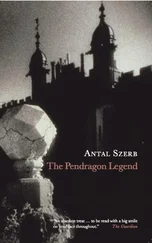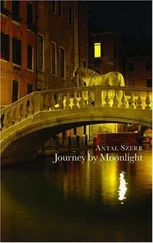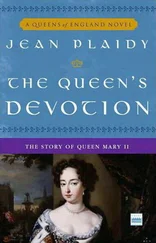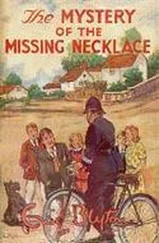The highly symbolic episode we have narrated was just one of those moments. Contemporaries saw the necklace trial as an example of absolutist royal and ministerial behaviour that cried out to the heavens, but now that the details have been clarified we can see it rather as the King’s incompetence that did so. Even the revolutionary Condorcet recognised this: while the people imagined themselves to be groaning under tyrannical oppression, properly speaking they were the victims of a headless anarchy.
We urge you, dear reader, not to misunderstand us. It is far from our intention to mourn for the French Monarchy in the manner of modern French historians, nor is it to grieve, like Wahl, that they did not deploy the most powerful weapons at their command. In some strange and indefinable way, we do believe, amongst all the other forces at work in history there are also moral ones, and that in the great deeds of nations the struggle between Good and Evil will go on for ever. Louis XVI’s good-heartedness and weakness arose from a bad conscience, and the French King’s conscience certainly had reason to be bad. Because neither the lace-frilly, sweetly-autumnal beauty of the Régime, nor the King’s always heartfelt good intentions (themselves a reflection of the prevailing sensibility and the habit of living in the constant expectation of miracles) — ever quite amounted to the salt-sweet spring gale that was really needed. And what came after Louis XVI … we do not of course forget the horrific aspects of the Terror, but nonetheless, the glowing twilight of those years … permit me, reader, once again, for the last time, to give you the words of Tocqueville:
“… it was an age of youthful enthusiasm, of noble and sincere feelings, and for all its blunders it will live for ever in the memory of mankind and serve to shock people out of their reverie whenever they seek to destroy or enslave their fellow men.”
In Carlyle’s words, “The diamond necklace vanished through the horn gate of dreams”; but its fame spread throughout Europe. None of the events that occurred in the decades leading up to the Revolution received press coverage, but contemporaries instinctively felt its fatal significance.
And even here, in far-away Hungary, at that time so desperately cut off from the mainstream of world events, it haunted people’s imagination. This is shown by the fact that a Jesuit father and neo-Latin poet, György Alajos Szerdahely, celebrated it in verses written in his fine Jesuit-humanist manner, mentioning each of the mythological personages who came to grief through the necklace.
DE MONILI FAMIGERATO, QUOD IN GALLIA MAGNAM LITEM, IN EUROPA EXPECTATIONEM CONCITAVIT ANNO MDCCLXXXV. ET VI
Quae Furia est? Certe illa fuit; fortasse Megaera
Quae Stygio retulit tale Monile specu?
Parcite Francigenae dirum adfectare Monile!
Thebaidem Statii Patria vestra legat.
Harmonie, et Semele, Iocasta, nocensque Eriphyle,
Atque alii interitu vos monuere suo.
Fatale est; et quisquis adhuc mortalis habebat,
Morte, vel infami labe Monile luit.
Lemnius huic varias pestes, laetumque venenum
Miscuit, et propriis hostibus ipse dedit.
Frustra ago. Romano vestitus murice Princeps
Heu! domino semper triste Monile petit.
Quid tibi femineo cum cultu et merce Sacerdos?
Femineum nescis sic recubare malum.
Infelix, quicunque putat se posse placere,
Dum sibi feminea credulitate placet.
Vos damna et poenas emitis? La Motthe feroces
Ad furias salvus triste Monile tulit.
Concerning the infamous necklace, the subject of a trial in France, which aroused great interest in Europe in 1785 and 1786.
Which Fury was that? For certain it was one; perhaps Megaera
Bringing the necklace back from the Stygian cave?
Beware, children of France, that dire necklace!
Let your countrymen study the Thebeiad of Statius.
Harmony and Semele, Jocasta and the mischievous Eriphyle
And others shall warn you of the ruin it brings.
It is fatal; and whatever mortal has so far possessed it
Has paid for it by death or deep shame.
With various plagues and deadly poison Apollo
Has infused it, and gives it to his very own enemies.
I speak in vain. A prince dressed in the purple of Rome
Pursues, alas! the unhappy necklace.
Oh priest, what have you to do with female adornments and hire?
You should know to beware of feminine malice.
Unhappy the man who thinks he can please
While pleasing himself with womanish credulity.
Will you purchase condemnation and imprisonment? It was La Motte
Who, himself unharmed, took the unhappy necklace to the wild Furies.
But the strongest literary response to the trial came from the greatest writers of the age, the giants of German classicism. Goethe, as we have already mentioned, visited Cagliostro’s family in Palermo and wrote a play about it called Der Gross-Kophta . The play does not rank among the best of his great Weimar productions, but on the other hand it is certainly not his weakest. The principals have no names, only titles. Some are slightly reduced in rank. The Queen is a mere duchess, the Cardinal a Domherr . True, Cagliostro remains a count, and the La Mottes are a marquis and marquise. The play, clearly for stage reasons, has a happy ending: a Ritter (knight) who is in love with the character corresponding to d’Oliva discovers the intrigue just in time, and the guilty parties receive their due punishment immediately after the truth is revealed about the scene in the Venus Bower. In the play the Graf , or Cagliostro, represents the comic element, and is a highly entertaining figure, a fine example of Goethe’s humour and gaiety.
Schiller, also under the influence of the event, wrote a great and sadly unfinished ghost story, Die Geisterseher —The Man Who Sees Ghosts. And while we are with Schiller, we cannot resist mentioning our hypothesis, difficult as it is to prove, that the necklace trial may also have inspired one of the truly great creations of world literature, his Don Carlos . We know of course that Schiller wrote the play on the basis of a conversation with an author called Saint-Real, and that Lessing’s Nathan der Weise encouraged him to stress the yearning for freedom; but if we study or even just glance through Don Carlos with the necklace trial in mind, we find interesting similarities of mood and atmosphere. The play begins in medias res : Don Carlos has long been languishing in despair of ever speaking face to face with the Queen. Someone goes between them and helps him to a meeting. Like Marie-Antoinette, the Queen is the unhappy and protesting prisoner of protocol.
In what follows, the entire action turns on letters that are stolen, handed over, recovered, and fall into the wrong hands, and you can find yourself quite lost among the huge number of documents (analogous to Marie-Antoinette’s letters to Rohan, Rohan’s to Jeanne, and the whole fog of mystery about this correspondence that Jeanne spreads around herself). Then there is the King’s secret and tragic suffering as he sits in solitude on the throne brooding over his wife’s fidelity — could Schiller have been thinking of Louis XVI? Chronology seems to confirm our theory. Schiller took a long time writing the play. One act was finished in 1785, and the completed work appeared in 1787, so it was composed precisely during the period of the necklace trial. That Schiller always followed, and indeed took the greatest interest in, the more sensational French criminal trials, is well known.
Читать дальше
